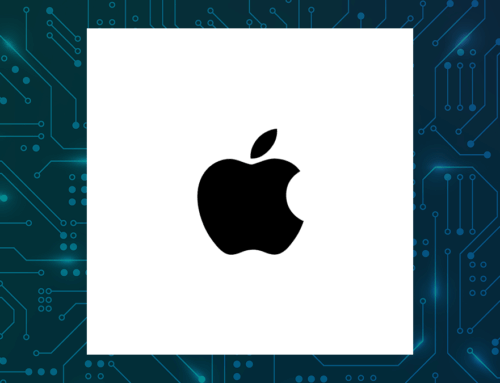Peak Bitcoin Fears Confront GENIUS Act and Balance-Sheet Bulls
November 24, 2025
Through mid-October, bitcoin looked like the comeback story of 2025, setting successive records near $125,000 before losing more than $40,000 in roughly six weeks. Prices have fallen into the low-$80,000 range, wiping out about a third of market value and marking the steepest drawdown since last years bull run began.
The question now is whether this is a healthy consolidation after a speculative blow-off, or whether the market has already printed “peak bitcoin” for this cycle.
The answer matters well beyond crypto natives, because bitcoin is no longer just a trading instrument, as had marked its early years.
It now sits on corporate balance sheets, underpins some stablecoin reserve models and influences regulatory risk debates from Washington to boardrooms.
Echoes of 2022’s Crash
If the last few weeks feel familiar, that is because they are, at least for those who have been in the crypto space for the last few years. The old saying that history does not repeat itself but it does rhyme is an apt sentiment here.
In 2022, bitcoin entered the year near $47,700, slid into a prolonged bear market and bottomed around $15,800 in November before ending the year close to $16,500. Bitbo Charts gives a simple look at a 2022 price chart that shows a classic boom-and-bust arc, with a peak, a grinding decline and a capitulation phase that took many leveraged players with it.
Advertisement: Scroll to Continue
The current drawdown is smaller in percentage terms but feels more consequential, because bitcoin is now embedded in balance sheets, ETF products and policy debates.
The GENIUS Act and Reserve Requirements
The regulatory environment is different from 2022. The GENIUS Act, signed into law this summer, created a federal framework for dollar-denominated stablecoins, requiring 1:1 reserve backing, AML compliance and supervision by federal or state regulators.
PYMNTS coverage of the law highlights an important bitcoin-specific wrinkle. As Federal Reserve Governor Michael Barr noted in remarks reported by PYMNTS, the statute allows repos backed by “any medium of exchange authorized or adopted by a foreign government,” which could include bitcoin because El Salvador recognizes it as legal tender. That means an issuer might try to build bitcoin-backed repos into a stablecoin reserve portfolio, even though PYMNTS points out that such a design would make those so-called stablecoins inherently less stable.
At the same time, other GENIUS-related coverage has emphasized that tokenized deposits may offer a safer, bank-regulated alternative to privately issued stablecoins, particularly for cross-border B2B flows.
In that vision, bitcoin sits at the speculative edge of the system, while regulated dollar instruments handle actual payment traffic.
Bitcoin-Bulked Balance Sheets
Where bitcoin has made arguably s structural inroads is on corporate balance sheets. Strategy, the rebranded MicroStrategy, has doubled down on its role as the flagship “bitcoin treasury” company. In its most recent Form 10-Q for the quarter ended Sept. 30, 2025, Strategy reported holding about 640,031 bitcoins, with a cost basis of roughly $47.4 billion and a carrying value of $73.2 billion under the new crypto-asset accounting standard.
Block’s latest 10-Q for the same quarter shows a smaller but still material bet. As of Sept. 30, 2025, the company held approximately 8,780 bitcoins for long-term investment purposes, with a fair value of about $1 billion, plus another 144 bitcoins held for operating purposes inside Cash App to facilitate customer trades. Those holdings sit in “other non-current assets,” and Block now remeasures them at fair value each quarter, recognizing gains or losses in net income.
Tesla’s most recent 10-Q adds another high-profile name to the list. The electric-vehicle maker reports digital assets with a fair value of $1.3 billion as of Sept. 30, 2025, and notes that the majority of those holdings consist of 11,509 units of bitcoin acquired for $386 million. The company also discloses that mark-to-market gains and losses on those digital assets feed into other income and contribute to the volatility of reported results.
These numbers are not hypothetical “crypto experiments.” For crypto-rich treasuries volatility can effectively turning treasury functions into leveraged bets on the digital asset.
What Happens if Bitcoin’s Peaked?
Under older accounting rules, companies like Strategy had to test bitcoin for impairment and write holdings down when prices fell, but they could not write them back up until an asset was sold. That model produced large one-way impairment charges during the 2022 crash.
The new crypto-asset standard, reflected in recent filings from Tesla and Block, moves bitcoin to a fair-value model. Gains and losses now flow through earnings each quarter as prices move. Block’s 10-Q, for example, reported a remeasurement gain of roughly $59.6 million on its bitcoin investment for the third quarter of 2025 and $178.4 million year-to-date, along with explicit warnings that future price declines would reverse those gains. Tesla reported net digital-asset gains in its cash flow statement and marks its bitcoin holdings to market alongside other Level 1 assets.
If the current slide continues, the next set of quarterly reports will show the other side of that coin: remeasurement losses that can shave hundreds of millions, or in the case of Strategy, potentially billions, off net income and shareholders’ equity.
Payments Use Cases Lag
For all the attention to price and treasuries, bitcoin’s role in day-to-day payments remains limited. Stablecoins and tokenized deposits are gaining momentum as instruments for cross-border settlement, supply-chain payments and liquidity management, rather than on bitcoin as a medium of exchange.
Where bitcoin does feature in payments, it is often through programs like Block’s global bitcoin payments features for merchants or niche cross-border corridors where counterparties are comfortable taking on the asset’s volatility.
That volatility is the key friction. When an asset can lose 30% of its value in a month, pricing goods, paying invoices or setting salaries in that unit exposes both sides of the transaction to material basis risk. Regulation under the GENIUS Act may harden the guardrails around dollar-linked tokens, but it does not remove bitcoin’s inherent price swings.
In that sense, the current sell-off may reinforce an emerging division of labor. On one side, stablecoins and tokenized deposits, designed to hold par to the dollar and live under prudential oversight, are aligning with real-world commerce. Bitcoin is settling into a role as a high-beta reserve asset for a subset of corporates and investors who are willing to accept deep drawdowns in pursuit of long-run upside.
Whether today’s levels mark “peak bitcoin” for this cycle, or simply another step on the way to higher highs, the latest downdraft may wind up forcing CFOs, regulators and payments providers to stress-test their assumptions. If nothing else, it is a reminder that once bitcoin moved from trading accounts onto balance sheets and into statute books, its boom-and-bust cycles have far-reaching repercussions.
Search
RECENT PRESS RELEASES
Apple Inc. $AAPL Shares Bought by BG Investment Services Inc.
SWI Editorial Staff2025-11-24T03:54:26-08:00November 24, 2025|
Earnings live: Gap and Intuit stocks gain, BJ’s Wholesale results beat in ‘volatile’ envir
SWI Editorial Staff2025-11-24T03:54:03-08:00November 24, 2025|
Warren Buffett Sold $3.2 Billion of Apple and Piled $4.3 Billion Into This Hot Artificial
SWI Editorial Staff2025-11-24T03:53:41-08:00November 24, 2025|
Apple: Most Expensive, Least Profitable, Slowest Growing Big Tech Stock (Downgrade) (AAPL)
SWI Editorial Staff2025-11-24T03:53:23-08:00November 24, 2025|
Earnings live: S&P 500 on track for highest revenue growth in 3 years, with reports from D
SWI Editorial Staff2025-11-24T03:53:04-08:00November 24, 2025|
Where Will Apple Stock Be in 5 Years?
SWI Editorial Staff2025-11-24T03:52:44-08:00November 24, 2025|
Related Post




